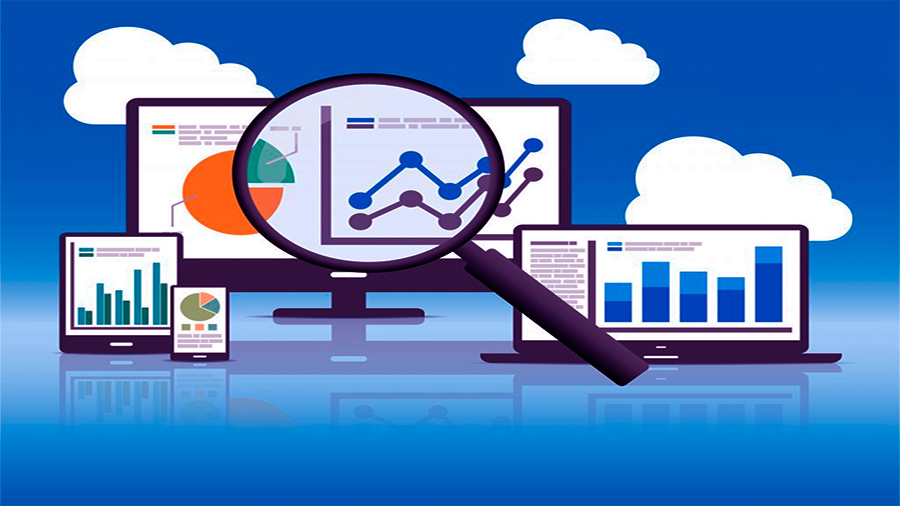In the era of digital transformation, big data has emerged as a powerful tool for driving growth in online businesses. By leveraging big data analytics, companies can gain deep insights into customer behavior, optimize marketing strategies, and make informed decisions that propel business success. This article explores the role of big data in online business growth and how it can be harnessed to achieve sustainable competitive advantage.
Understanding Big Data
Big data refers to the vast volume, variety, and velocity of data generated by digital interactions, transactions, and activities. This data can be structured, semi-structured, or unstructured, and it encompasses everything from customer demographics and purchase history to social media interactions and web analytics.
The Importance of Big Data in Online Business
Big data provides a wealth of information that, when analyzed effectively, can transform how businesses operate and grow. Here are key reasons why big data is crucial for online business growth:
Customer Insights
Understanding Customer Behavior: Big data analytics helps businesses understand customer behavior by analyzing patterns and trends in their interactions. This includes browsing history, purchase behavior, social media activity, and feedback.
Personalization: By leveraging customer data, businesses can create personalized experiences that cater to individual preferences and needs. Personalization can lead to increased customer satisfaction, loyalty, and higher conversion rates.
Optimizing Marketing Strategies
Targeted Marketing: Big data enables businesses to segment their audience based on various criteria such as demographics, interests, and behavior. This segmentation allows for more targeted and effective marketing campaigns.
Predictive Analytics: Using predictive analytics, businesses can forecast future trends and customer behavior. This helps in planning marketing strategies, anticipating customer needs, and staying ahead of the competition.
Improving Operational Efficiency
Supply Chain Optimization: Big data analytics can optimize supply chain operations by predicting demand, managing inventory levels, and identifying inefficiencies. This leads to cost savings and improved operational efficiency.
Real-Time Decision Making: With big data, businesses can make real-time decisions based on up-to-date information. This agility allows for quick responses to market changes and customer demands.
Enhancing Customer Experience
Customer Support: Analyzing customer interactions and feedback helps businesses identify common issues and improve their support services. This proactive approach enhances customer experience and builds brand loyalty.
Product Development: Big data insights can inform product development by highlighting customer preferences and unmet needs. This ensures that new products are aligned with market demand and customer expectations.

Strategies for Leveraging Big Data in Online Business
To harness the full potential of big data, businesses need to implement effective strategies for data collection, analysis, and application.
Data Collection
Comprehensive Data Sources: Collect data from a variety of sources, including website analytics, social media, customer relationship management (CRM) systems, and transaction records. The more comprehensive the data, the more accurate and insightful the analysis will be.
Data Integration: Integrate data from different sources to create a unified view of the customer. This holistic approach provides a deeper understanding of customer behavior and preferences.
Data Analysis
Advanced Analytics Tools: Utilize advanced analytics tools and technologies such as machine learning, artificial intelligence, and predictive analytics. These tools can process large datasets quickly and uncover hidden patterns and insights.
Data Visualization: Use data visualization techniques to present complex data in an easily understandable format. Visualization tools like Tableau, Power BI, and Google Data Studio can help identify trends and make data-driven decisions.
Actionable Insights
Identify Key Metrics: Focus on key performance indicators (KPIs) that align with your business goals. This includes metrics such as customer lifetime value, churn rate, and conversion rate.
Implement Data-Driven Strategies: Develop and implement strategies based on data insights. This could include personalized marketing campaigns, optimized pricing strategies, and improved customer service initiatives.
Continuous Improvement
Regular Monitoring: Continuously monitor and analyze data to track the effectiveness of implemented strategies. Regular monitoring allows for ongoing optimization and adjustment.
Feedback Loop: Create a feedback loop where data insights inform business decisions, and the outcomes of those decisions generate new data for analysis. This iterative process fosters continuous improvement and growth.

Case Studies: Big Data in Action
To illustrate the impact of big data on online business growth, here are a few examples of companies successfully leveraging big data analytics.
Amazon
Personalized Recommendations: Amazon uses big data to power its recommendation engine, which suggests products based on customer browsing and purchase history. This personalization drives significant sales and enhances customer satisfaction.
Inventory Management: Amazon’s big data analytics optimizes inventory management, ensuring that products are available when and where they are needed. This efficiency reduces costs and improves customer experience.
Netflix
Content Recommendations: Netflix analyzes viewer data to provide personalized content recommendations. This keeps viewers engaged and reduces churn rates.
Content Production: Big data informs Netflix’s content production decisions by identifying popular genres, actors, and viewing patterns. This data-driven approach ensures that new content aligns with viewer preferences.
Starbucks
Customer Loyalty Program: Starbucks uses big data to personalize its loyalty program, offering customized rewards and promotions based on customer purchase behavior.
Location Strategy: Big data analytics helps Starbucks determine the best locations for new stores by analyzing foot traffic, demographic data, and local competition.
Challenges and Considerations
While big data offers significant benefits, businesses must also navigate certain challenges to fully leverage its potential.
Data Privacy and Security
Regulatory Compliance: Ensure that data collection and analysis comply with relevant data privacy regulations such as GDPR and CCPA. Implement robust data protection measures to safeguard customer information.
Transparency: Be transparent with customers about how their data is collected and used. This builds trust and ensures compliance with privacy regulations.
Data Quality
Accuracy and Consistency: Ensure that the data collected is accurate, consistent, and up-to-date. Poor data quality can lead to incorrect insights and misguided decisions.
Data Cleaning: Implement data cleaning processes to remove duplicates, correct errors, and fill in missing values. High-quality data is essential for reliable analysis.
Technical Expertise
Skilled Workforce: Invest in hiring and training data analysts, data scientists, and other professionals with expertise in big data analytics. Skilled personnel are crucial for extracting meaningful insights from data.
Advanced Tools: Use advanced analytics tools and technologies to process and analyze big data. Stay updated with the latest advancements in data analytics to maintain a competitive edge.
Big data is a powerful catalyst for online business growth, offering deep insights into customer behavior, optimizing marketing strategies, and enhancing operational efficiency. By implementing effective data collection, analysis, and application strategies, businesses can harness the full potential of big data to drive growth and achieve sustainable competitive advantage. As the digital landscape continues to evolve, leveraging big data will remain a critical factor in the success of online businesses.









